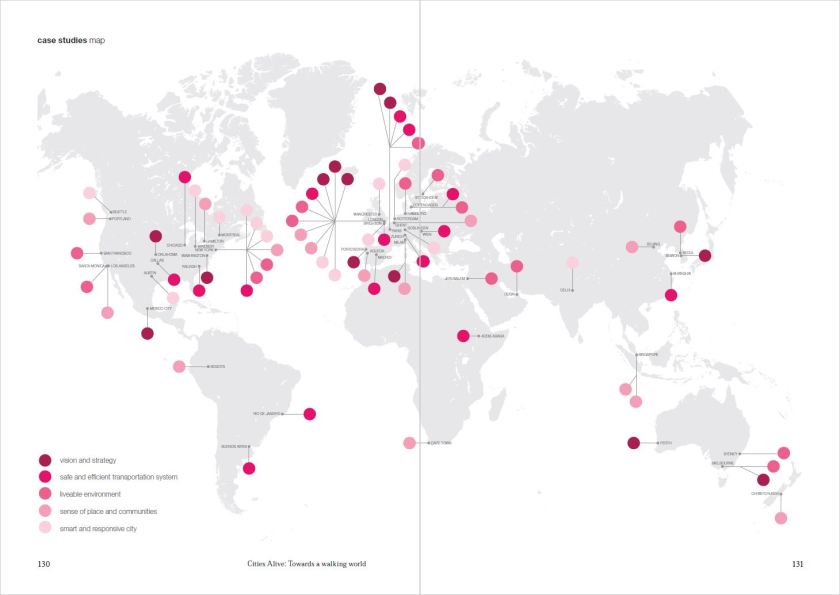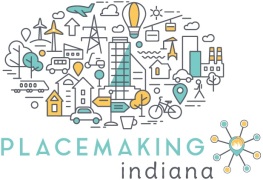Did you know:
- 33% of Americans are unable to drive a car?
- Shifting from a long commute to a short walk would make a single person as happy as if he or she had found a new love?
- Each point increase in walk score (a walkability index) typically increases US house prices by $700-$3,000?
- The Indianapolis Cultural Trail diverts over 68 million gallons of runoff per year?
- Every 10 minutes of community cuts community involvement by 10%?
Last week, I wrote about a project going on in Gary, Indiana which encourages people to get out and walk around their downtown in order to reinvest in it. This week I’m highlighting a really neat resource which is along the same lines: a comprehensive document about walkability in cities and the plethora of positive effects moving “towards a walking world” can have individually, locally, and globally.
“Walkability is a word that did not exist just 20 years ago. We made walking so unnatural that we had to invent a word to describe what we were missing” – Dan Burden, Director of Innovation and Inspiration at Blue Zones
Cities Alive: Towards a walking world is an extensive report put together by different parts of the ARUP team in London, with help from other specialists around the world, which details the benefits of walkable cities. Published in 2016, it categorizes the specific benefits of walkability, one of which is placemaking, into social, economic, environmental, and political benefits. In this easy-to-read, detailed, and beautifully assembled report, the reader can pretty much find any benefit of walkability, numbers for it, and the reasoning behind it. This report is the real deal.

The 16 general areas of benefits from walkable cities, according to this report, each have their own icon and are presented in groups of four: social, economic, environmental, and political. Source.
As if that were not enough, the report also presents interviews done with professionals around the world on this topic and offers practical solutions, 40 of them to be exact, to increase walkability in your city! Finally, there are 80 case studies from around the world categorized into topics of:
- Vision and Strategy
- Safe and Efficient Transportation System
- Liveable Environment
- Sense of Place and Communities and
- Smart and Responsive City

This map of the case study sites show the diverse range of topics the case studies cover and, although many of them are in western Europe as that is where the ARUP group is located, there are some on every populated continent. Source.
“Essentially walkability is allowing people to do what the human body was designed to do in the first place: to go places without having to get into some mechanical instrument” – Dan Burden, Walkability Expert, the Doable City Forum
If you are interested in the effects and statistics related to walkability and public places in cities or if you need a resource for a project or presentation, this document is for you! Get your copy here!
Main Photo Source: Cities Alive

